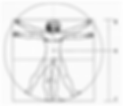
YOGA ANATOMY AND PHYSIOLOGY
Anatomy is the science of the structure of a living organism and physiology is the science of the functions of the body.
The human body consists of three distinct parts: head, trunk and extremities. The trunk is differentiated into the chest (thoracic) part and the abdominal part. These two parts are separated internally by a muscular curtain called the diaphragm. The human body is well organized for its different vital functions. Such functional organization of the organs in the body is known as a system. For example, the digestive system for the function of digestion, the respiratory system for the function of exchange of oxygen and carbon dioxide between the air and the blood, etc. The total function of the body depends on the integration of these systems. A system is constructed of some parts which are grouped together for a specific function. For example, mouth, teeth, stomach, liver, intestine, pancreas and colon work together as digestive system to provide nutrition to the body. There are eleven main systems: skeletal system, muscular system, digestive system, respiratory system, nervous system, circulatory system, urinary system, endocrine system, reproductive system, integument system (skin) and immune system.
Courses on Anatomy and Physiology:
Course on understanding and practical application of anatomy and physiology in Yoga practice Course on Vedic and Yogic anatomy